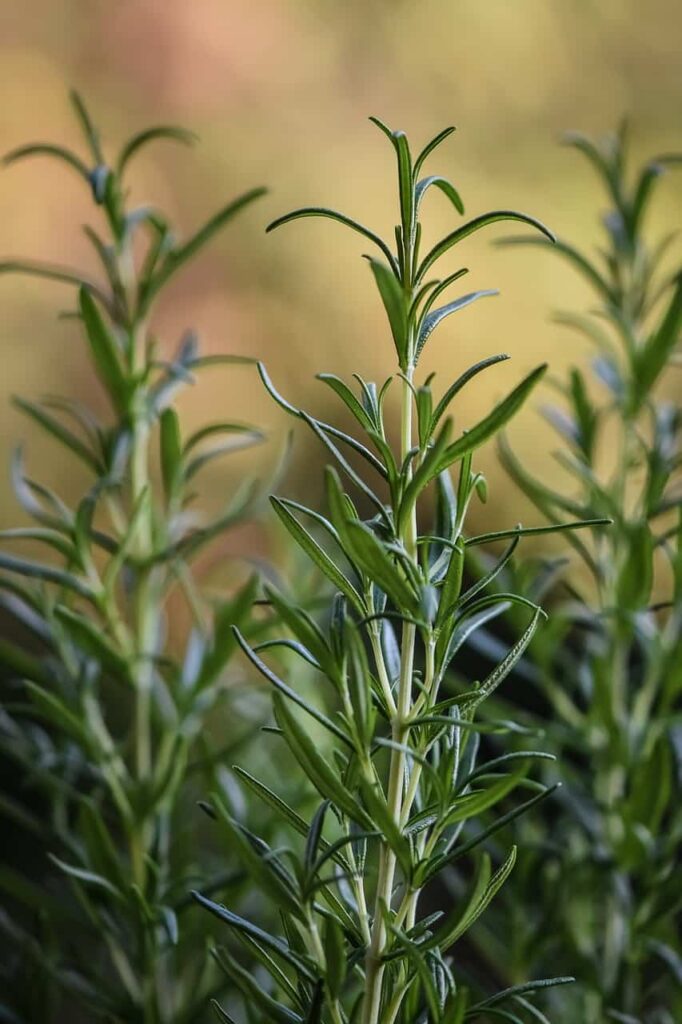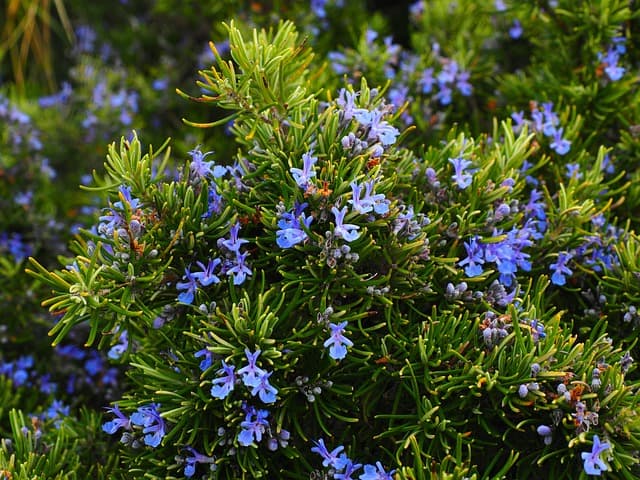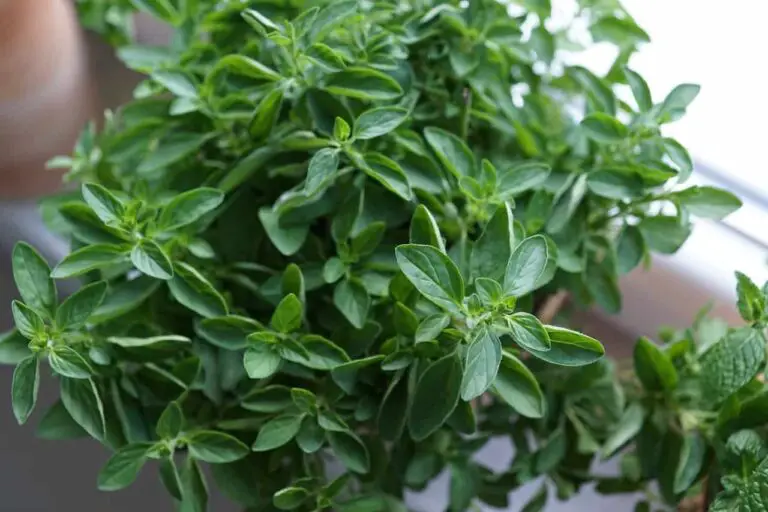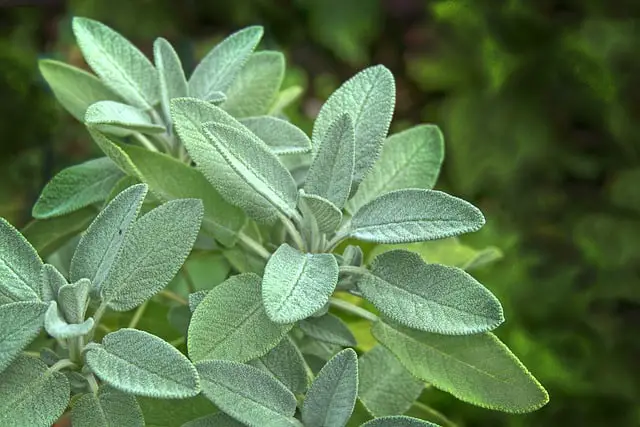How To Harvest Rosemary Without Killing The Plant
Rosemary, an aromatic herb with many uses, can add flavor to your culinary creations. But when it comes to harvesting rosemary, gardeners worry about damaging or killing the plant.
We’ll share Step-by-step information on How To Harvest Rosemary Without Killing The Plant. From choosing the right harvest time to using the proper tools and techniques.
Understanding the Rosemary Plant Gardening

Before diving into harvesting without harming the plant. Let’s take a moment to understand this herb and its unique characteristics.
Rosemary, scientifically called Rosmarinus officinalis, is a perennial bush from the Mediterranean. Its delicate leaves and lovely scent enrich any meal. This culinary herb flourishes in temperate weather conditions and favors well-drained soil, along with an ample amount of sunlight. It has also some health benefits.
Rosemary flowers have a flavor like the leaves and stems. Enjoy them fresh, or use them as a salad garnish.
Step by Step Guide to how to harvest rosemary without killing the plant
Properly harvesting rosemary is crucial for maintaining the plant’s health and longevity. Below is a detailed, step-by-step guide on how to harvest rosemary without causing any harm to the plant.
Gather the Necessary Tools
To successfully harvest without causing harm to the plant, it’s important to gather the necessary tools.
These tools include pruning shears or a pair of scissors. It’s essential to have a clean and sharp tool to ensure a clean cut on the stems. For larger bushes, garden shears can be used. Also, a plastic bag or container to store rosemary.
Disinfect Your Tools
Before you begin harvesting rosemary, disinfect your tools. To prevent spreading diseases or pathogens that can harm the plant, wipe down your pruning shears or scissors with rubbing alcohol or a diluted bleach solution. This will eliminate potential contaminants, allowing for a clean and safe harvest.
Also Read:- Solve The Mystery: Why Is My Corn Plant Turning Yellow?
Choose the Right Time
Timing is crucial to harvest rosemary without harming the plant. The best time of the day is in the morning after dew dries but before it gets hot. This keeps the plant hydrated and healthy. Avoid harvesting during extreme temperatures or cold weather that can stress the plant. Ideally, harvest before the first frost.
Select Healthy Stems
When selecting which stems to harvest, choose healthy and woody stems. Healthy stems will have a strong aroma and vibrant leaves. Avoid harvesting stems less than 8 inches (20 cm) long, as they may not have matured enough to handle the stress of being trimmed. Select branches at least 8 inches in height for harvesting, and wait until your plants have replaced the growth you took off before trimming again.
Cut the Rosemary Stems

To cut stems, use pruning shears or sharp scissors. To prevent damage, make clean cuts near the plant’s base. Harvest sprigs individually, leaving enough foliage for growth. Cutting at an angle promotes water absorption and encourages new growth.
Once you have harvested the rosemary stems, it’s time to gather your harvest. Take the cut sprigs and place them in a pristine basket or container, ensuring you handle them to prevent any damage to the leaves. It is important to avoid crushing or bruising the leaves, as this could impact the herb’s quality.
Trim the Remaining Rosemary
Remove excess growth and dead or damaged branches to trim the remaining rosemary plant. The plant grows and stays shapely by trimming its softer tips. To maintain a healthy rosemary bush, cut no more than one-third.
Store or Use Immediately
After harvesting, you have two options: storing or fresh use Immediately. If you choose to store it, remove any excess moisture by gently patting the sprigs dry with a clean cloth.
Water and Care
Once you have finished harvesting, ensure the rosemary plant is watered to aid in its recovery from pruning. Maintain regular care for the plant, including adequate sunlight and well-drained soil.
Also Read:- How Often To Water Pumpkins: Essential Tips For Success
The best way to store after harvest
After harvest, storing properly is also very important to ensure the freshness and flavor of your rosemary.
Drying
Various methods are available to dry the herb to maintain its fresh flavor.
- They can naturally dry out by placing rosemary sprigs in a well-ventilated area and hanging them upside down.
- You can use twine or a rubber band to dry rosemary to secure many stems. Ensure the bundles are thick enough for proper air circulation.
- Hang the bundles upside down in a dark, dry, and well-ventilated space. It may take weeks to dry completely, so be patient.
- Another method is laying the sprigs on a baking sheet and drying them with air. A dehydrator can efficiently dry the rosemary if you want a quicker option.
- You can also lay the sprigs on a mesh screen for optimal drying to allow air circulation. Drying leaves individually is important to prevent mold or mildew formation.
Freezing
Freezing is another great option for preserving its flavor and aroma. Here’s how you can do it:
- Start by washing the rosemary sprigs thoroughly and patting them dry.
- Afterward, separate the rosemary leaves from the stem, removing any woody stems or leaves in poor condition.
- Put them in a container that is airtight or a freezer bag. Ensure that you remove as much air as you can before closing it tightly.
- Label the container with the date to track freshness.
- Store the container in the freezer to keep the fresh rosemary for several months.
Store Properly
An airtight container is best to preserve the freshness of dried rosemary. To preserve the freshness of fresh sprigs, store them in a plastic bag in the refrigerator to prolong their shelf life.
Wrap fresh sprigs in a damp paper towel and put them in the fridge to use later. Freeze sprigs in an airtight container or freezer bag to keep them for a long time. Store whole sprigs of fresh in the fridge for the most flavor.

The Right Time to Harvest Rosemary
Timing is paramount when reaping rosemary as it guarantees the best flavor and the plant’s well-being. Mature rosemary plants are ideal for harvesting, ensuring a full-size shrub with flavorful herbs. The best time to harvest the aromatic herb is in the morning, once the dew has evaporated and is freshest. Soft tips and green leaves indicate the peak flavor and fragrance. It’s essential not to over-harvest at once. Allowing the plant to regrow and continue producing fresh herbs throughout the growing season.
How Does Harvesting Affect the Rosemary Plant?
Harvesting rosemary has several positive effects on the plant. It encourages new growth, prevents the plant from becoming woody, and promotes better airflow.
Regular pruning also removes older leaves and stimulates the production of aromatic oils. Proper harvesting techniques ensure the plant’s longevity and allow you to enjoy rosemary’s fresh flavor and aroma.
Common Mistakes to Avoid While Harvesting

Avoid making these common mistakes while harvesting to ensure the health and longevity of your plant:
Over-harvesting: Avoid excessive rosemary at once to ensure the plant’s regrowth. Harvest only what you need. So the plant can produce fresh herbs all season.
Improper cutting: Using sharp and clean garden shears or scissors when harvesting. Avoid tearing or ripping the stems, which can damage the plant and lead to disease or infection.
Ignoring signs of stress: Check the plant’s health and symptoms like yellowing or wilting leaves. If these indicators appear, avoid harvesting and focus on plant care.
Harvesting too late: The best time to harvest is in the morning after the dew has dried. This is when the herb is at its freshest and most flavorful. Avoid harvesting in the day’s heat or in the evening when the plant may be stressed from exposure to the elements.
Can Over-Harvesting Kill a Rosemary Plant?
Excessive harvesting may cause a rosemary plant to become weakened, but it is unlikely to result in the death of the entire plant. To prevent any harm, avoid excessive pruning or removing an excessive number of leaves at once. Also, it allows the plant sufficient time to recover between harvests. Provide proper care to enable it to withstand frequent harvesting. Monitor the plant’s health and adjust your harvesting practices accordingly.
Also Read :- Unlock The Secret: How To Make Fiddle Leaf Fig Branches
Conclusion
Understanding how to harvest rosemary without killing the plant is fundamental for successful rosemary gardening. Following proper cutting techniques, recognizing signs of stress, and harvesting at the right time. To guarantee the health and productivity of your rosemary plant during the entire growing season, ensure the following steps are taken.


